
Carol II reigned as King of Romania from 8 June 1930 until his abdication on 6 September 1940.

Ion Antonescu was a Romanian soldier and authoritarian politician who, as the Prime Minister and Conducător during most of World War II, presided over two successive wartime dictatorships. After the war, he was convicted of war crimes and executed.

The National Peasants' Party was an agrarian political party in the Kingdom of Romania. It was formed in 1926 through the fusion of the Romanian National Party (PNR), a conservative-regionalist group centered on Transylvania, and the Peasants' Party (PȚ), which had coalesced the left-leaning agrarian movement in the Old Kingdom and Bessarabia. The definitive PNR–PȚ merger came after a decade-long rapprochement, producing a credible contender to the dominant National Liberal Party (PNL). National Peasantists agreed on the concept of a "peasant state", which defended smallholding against state capitalism or state socialism, proposing voluntary cooperative farming as the basis for economic policy. Peasants were seen as the first defense of Romanian nationalism and of the country's monarchic system, sometimes within a system of social corporatism. Regionally, the party expressed sympathy for Balkan federalism and rallied with the International Agrarian Bureau; internally, it championed administrative decentralization and respect for minority rights, as well as, briefly, republicanism. It remained factionalized on mainly ideological grounds, leading to a series of defections.
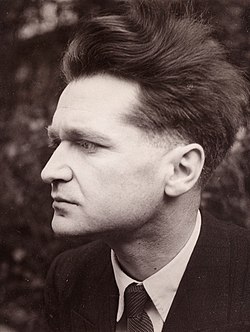
Emil Cioran was a Romanian philosopher and essayist, who published works in both Romanian and French. His work has been noted for its pervasive philosophical pessimism, and frequently engages with issues of suffering, decay, and nihilism. Among his best-known works are On the Heights of Despair (1934) and The Trouble with Being Born (1973). Cioran's first French book, A Short History of Decay, was awarded the prestigious Rivarol Prize in 1950. The Latin Quarter of Paris was his permanent residence and he lived much of his life in isolation with his partner Simone Boué.

The Iron Guard is the name most commonly given to a fascist movement and political party in Romania founded in 1927 by Corneliu Zelea Codreanu as the Legion of the Archangel Michael or the Legionnaire movement. The League was ultra-nationalist, antisemitic, antimagyar, antiziganist, anti-communist, anti-capitalist and promoted Eastern Orthodox Christianity. In March 1930 Codreanu formed the "Iron Guard" as a paramilitary political branch of the Legion, and in 1935, the Legion changed its official name to the "Totul pentru Țară" party. It existed into the early part of World War II. Its members were called "Greenshirts" because of the predominantly green uniforms they wore.

Corneliu Zelea Codreanu, commonly known as Corneliu Codreanu, was a Romanian politician who was the founder and charismatic leader of the Iron Guard, an ultranationalist, antisemitic, antimagyar, and antigypsy organization active throughout most of the interwar period. Generally seen as the main variety of local fascism, and noted for its Romanian Orthodox-inspired revolutionary message, the Iron Guard grew into an important actor on the Romanian political stage, coming into conflict with the political establishment and democratic forces. The Legionnaires traditionally referred to Codreanu as Căpitanul, and he held absolute authority over the organization until his death. He is cited on the list of the 100 Greatest Romanians.

The Romanian Front was a moderate fascist party created in Romania in 1935. Led by former Prime Minister Alexandru Vaida-Voevod, it originated as a right-wing splinter group from the mainstream National Peasants' Party (PNȚ). While in power, Vaida had an ambiguous approach to the Iron Guard, and constructed his own radical ideology; the FR had a generally xenophobic program of positive discrimination, being implicitly antisemitic. It was subsumed to the policies of King Carol II, maneuvering between the mainstream National Liberals, the PNȚ's left-wing, and the more radically fascist Guardists. Vaida tried to compete with the former two and appease the latter, assuming fascist trappings such as the black-shirted uniform. Like the Guard, he supported aligning Romania with the Axis powers, though he also hoped to obtain their guarantees for Greater Romania's borders. The FR's lower echelons included Viorel Tilea and other opponents of Vaida's approach, who believed in Romania's attachments to the League of Nations and the Little Entente.
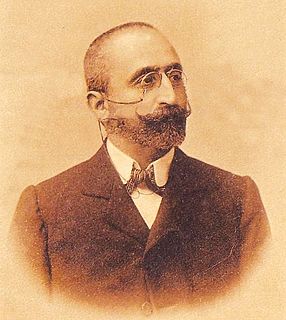
Alexandru C. Cuza, also known as A. C. Cuza, was a Romanian far-right politician.
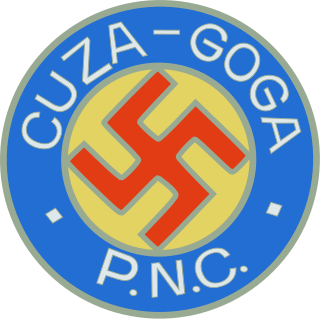
The National Christian Party was a radical-right authoritarian and strongly antisemitic political party in Romania active between 1935 and 1938. It was formed by a merger of Octavian Goga's National Agrarian Party and A. C. Cuza's National-Christian Defense League (LANC); a prominent member of the party was the philosopher Nichifor Crainic. Goga was chosen in December 1937 by King Carol II to form a government which included Cuza. The government lasted for only 45 days and was followed by a royal dictatorship by Carol.
Valerian Trifa was a Romanian Orthodox cleric and former fascist political activist, who served as archbishop of the Romanian Orthodox Church in America and Canada. For part of his life, he was a naturalized citizen of the United States, until he was stripped of his American citizenship.

Gândirea, known during its early years as Gândirea Literară - Artistică - Socială, was a Romanian literary, political and art magazine.
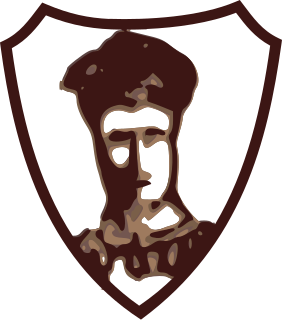
The Crusade of Romanianism was an eclectic far-right movement in Romania, founded in 1934 by Mihai Stelescu. It originated as a dissident faction of the Iron Guard, Romania's main fascist movement, and was virulently critical of Guard leader Corneliu Zelea Codreanu. Stelescu reinterpreted nationalist ideology through the lens of anticapitalism and "humane" antisemitism, appropriating some ideas from communism and Italian fascism. The Crusade was famously associated with Panait Istrati, world-renowned novelist and dissident communist, who added into the mix of "Romanianism" some elements of libertarian socialism.
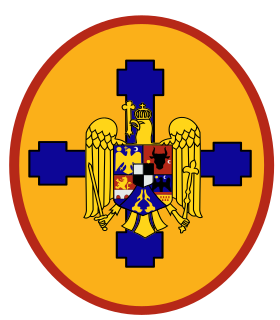
The National Renaissance Front was a Romanian political party created by King Carol II in 1938 as the single monopoly party of government following his decision to ban all other political parties and suspend the 1923 Constitution, and the passing of the 1938 Constitution of Romania. It was the party of Prime Ministers Armand Călinescu, Gheorghe Argeșanu, Constantin Argetoianu, Gheorghe Tătărescu and Ion Gigurtu, whose regimes were associated with corporatism and antisemitism. Largely reflecting Carol's own political choices, the FRN was the last of several attempts to counter the popularity of the fascist and antisemitic Iron Guard. In mid-1940, Carol reorganized the FRN into the more radical Party of the Nation, designed as a "totalitarian unity party". It effectively ceased to function the following year when the Parliament of Romania was dissolved.

Corpul Muncitoresc Legionar or Corpul Muncitorilor Legionari was a fascist association of workers in Romania, created inside the Iron Guard and having a rigid hierarchical structure. From its creation until September 1940, the CML was led by Gheorghe Clime; afterwards, the position was filled by Dumitru Groza, who oversaw the Corps during the period when the Iron Guard was in power — the National Legionary State —, and involved it in the 1941 Rebellion and Pogrom. The CML had its headquarters in Bucharest, on Calea Călăraşilor.

The National-Christian Defense League was a far-right political party of Romania formed by A. C. Cuza.

Sfarmă-Piatră was an antisemitic daily, monthly and later weekly newspaper, published in Romania during the late 1930s and early 1940s. One in a series of publications founded by Nichifor Crainic, with support from Universul editor-in-chief Stelian Popescu, it attempted to regroup the various fascist and pro-fascist movements around Crainic's "ethnocratic" principle. The editorial staff comprised a group of far right intellectuals; alongside the editor-in-chief Alexandru Gregorian, they included Ovidiu Papadima, Vintilă Horia, Dan Botta, Dragoș Protopopescu, Toma Vlădescu, and Pan M. Vizirescu. It notably hosted contributions by writers Ioan Alexandru Brătescu-Voinești, Radu Gyr and Ștefan Baciu.

The relationship between the Romanian Orthodox Church and the Iron Guard was one of ambivalence: while the Romanian Orthodox Church supported much of the fascist organization's ideology, it did not outright support the movement. Nevertheless, many individual Orthodox clerics supported the Iron Guard and spread their propaganda.

The League Against Usury was a single-issue, mainly agrarian, political party in Romania. Formed as a political answer to the Great Depression, it involved itself in the fight against "usury", bringing together politicians on all sides of the political spectrum. Its prominent backers and activists included leftists such as Nicolae L. Lupu and Ion D. Isac, independents such as Pantelimon Erhan, Stefan Frecôt, George Tutoveanu and Eraclie Sterian, and some affiliates of the interwar far-right. The LCC channeled protest votes, and competed in this with fascist movements such as the Iron Guard, ambiguously supporting economic antisemitism.
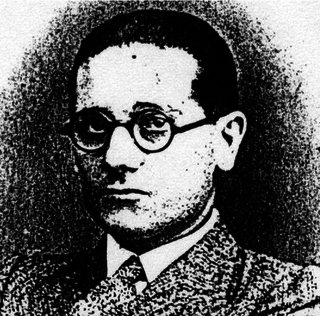
N. Crevedia was a Romanian journalist, poet and novelist, father of the writer-politician Eugen Barbu. Of Muntenian peasant roots, which shaped his commitment to agrarian and then far-right politics, as well as his dialectal poetry and humorous prose, he preferred bohemian life to an academic career. As a writer at Gândirea, Crevedia became a follower of Nichifor Crainic, and worked with him on various other press venues, from Calendarul to Sfarmă-Piatră. Turning to fascism, he sympathized with the Iron Guard, and, in the late 1930s, contributed to the press campaigns vilifying ideological enemies, while also putting out novels, reportage pieces, and anthologies. His affair with the Iron Guard muse Marta Rădulescu was at the center of a literary scandal, and was fictionalized by Crevedia in one of his novels.
Petruche Lupu was a shepherd from Maglavit commune, who claimed to have had divine visions. In the interwar period a mass phenomenon began, the Maglavit becoming a Christian pilgrimage place for crowds of people. The Maglavit Monastery is built in the area.



















